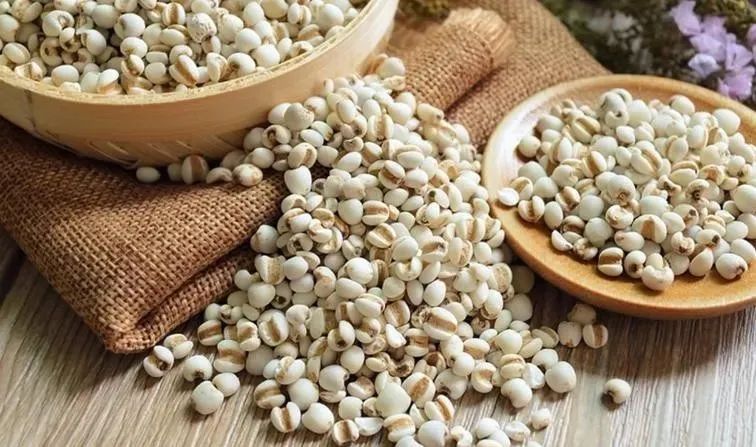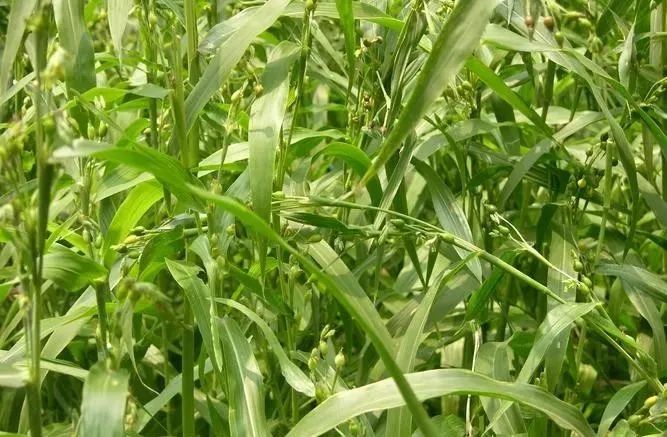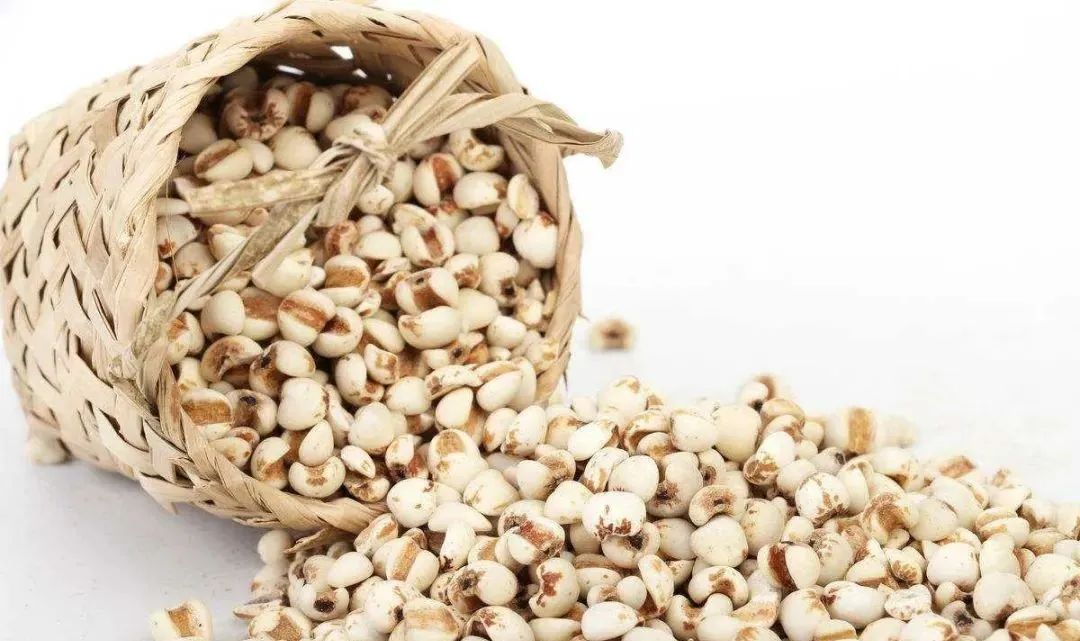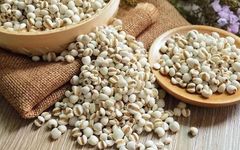Disease Inquiry, Health Guidance, Classic Health Preservation, Traditional Chinese Medicine and Herbal Medicine, Seeking Help When Ill
Coix seed (Yi Yi Ren) is a well-known traditional Chinese medicine, characterized by its cool nature, milky white color with light brown grooves, and sweet taste. This herb grows in damp, shady areas and matures in the autumn. Coix seed is rich in amino acids, proteins, and various trace elements. However, before consuming coix seed, it is essential to understand its efficacy and methods of consumption to fully utilize its benefits. Below, we will introduce the functions and effects of coix seed.
 Coix seed is also known as Yi Yi, Yi Mi, Yi Ren Mi, and Gou Zi Mi.
Coix seed is also known as Yi Yi, Yi Mi, Yi Ren Mi, and Gou Zi Mi.
The plant is an annual or perennial herb. The fibrous roots are relatively thick, with a diameter of up to 3 mm. The stem is erect, 1 to 1.5 meters high, with about 10 nodes. The leaves are linear-lanceolate, up to 30 cm long and 1.5 to 3 cm wide, with rough edges and a thick midrib that is prominent on the back; the leaf sheath is smooth, with the upper part shorter than the internodes; the leaf tongue is hard, about 1 mm long. The racemose inflorescence is axillary; the female spikelets are located at the lower part of the inflorescence, surrounded by a hard, bead-like glume, which is approximately the same length as the spikelet; the fertile spikelet has a membranous lower lemma and a thick, papery upper lemma with a blunt tip; the second lemma is boat-shaped, enclosed within the first lemma, with a thick, papery tip that tapers; the second outer glume is shorter than the first outer glume; the inner glume is similar to the outer glume but smaller, with three stamens that are degenerated; the pistil has a long style; the sterile spikelet is degenerated into a long cylindrical lemma. The male spikelets are often 2 to 3 per node; the sessile male spikelet has a flat first lemma, with both sides folded inward to form a ridge with uneven wings, blunt at the tip, with multiple veins; the second lemma is boat-shaped and also has multiple veins; both the outer and inner glumes are membranous; there are three stamens; the pedicellate male spikelet is similar to the sessile one but smaller or more degenerated. The lemma is covered by a hard glume, oval or ovoid. The flowering period is from July to September, and the fruiting period is from September to October.
It is the seed of the plant Coix lacryma-jobi. In the autumn, after the fruit matures, the whole plant is harvested, dried, and the fruits are removed from the husk and the yellow-brown outer skin, cleaned of impurities, and the seeds are collected and dried.
 Meridian Affinity: Spleen, Stomach, Lung.
Meridian Affinity: Spleen, Stomach, Lung.
Taste and Properties: Sweet, bland, cool.
Functions and Indications: Strengthens the spleen and promotes diuresis, alleviates dampness, clears heat, and expels pus. It is used for edema, beriberi, difficulty in urination, dampness causing pain and contraction, spleen deficiency diarrhea, lung abscess, intestinal abscess; flat warts.
Dosage: 9 to 30 g.
 The Efficacy and Functions of Coix Seed and Methods of Consumption
The Efficacy and Functions of Coix Seed and Methods of Consumption
1. Strengthening the Body
Coix seed is rich in protein and amino acids, which are essential nutrients for the human body. Consuming coix seed can supplement the body’s protein deficiency, enhance resistance, and improve immunity. It plays a significant role in strengthening the immune system, effectively contributing to longevity, making it particularly suitable for health maintenance in the elderly.
2. Analgesic and Antipyretic Effects
Coix seed mainly contains coixenolide, coixol, and coixan, which have good antipyretic effects against fever caused by polysaccharides formed by bacterial complexes. It also has calming effects; if you have been feeling irritable lately, consuming coix seed can help calm your emotions, and you will find that your mood improves without you even realizing it, while fatigue and irritability gradually fade away. These are some of the benefits of coix seed.
3. Methods of Consumption
Coix seed can be stewed with pig lung to make a delicious soup. First, wash the coix seed and soak it for two to three hours. Clean the pig lung, then place both in a stew pot and cook until done. Once cooked, the whole family can gather together to enjoy a wonderful meal.
Anti-tumor Formulas
Treatment for Cancer: The Shennong’s Herbal Classic states: “Eliminates the evil qi from the muscles and bones, benefits the intestines and stomach, reduces edema, and promotes appetite.” The Discussion on Medicinal Properties states: “Decoction can break the five streams of toxic swellings.” The Medical Human Door states: “Mainly for qi deficiency, chest pain.” Commonly used for treating lung pain, liver pain, gastric cancer, and choriocarcinoma, especially in cases of internal heat and dampness, and wind-damp obstruction causing internal heat accumulation.
Treatment for Lung Cancer: 20 g of coix seed, 30 g of buckwheat, 12 g of peach kernel, 6 g of stink bug, and 15 g of guanguan vine. Decoction three times, each for 20 minutes, combine the decoction, and take in three doses, with one dose every 15 days for one treatment cycle. (Anti-tumor: Efficacy of Traditional Chinese Medicine in Treating Cancer)
Treatment for Liver Cancer: Fresh coix seed, 30 g each of herbaceous plants such as Hedyotis diffusa, Salvia miltiorrhiza, and oyster shell, 9 g each of Codonopsis pilosula and earthworm, 12 g of fried pangolin, and 15 g each of seaweed, soapberry thorn, and summer withered grass, decoct and take one dose daily. (Anti-tumor: Efficacy of Traditional Chinese Medicine in Treating Cancer)
Treatment for Gastric Cancer: 30 g each of coix seed, white peony, Siberian ginseng, and soft jujube root, and 9 g each of sparganium and curcuma. Decoct and take one dose daily. (Anti-tumor: Efficacy of Traditional Chinese Medicine in Treating Cancer)
Treatment for Choriocarcinoma: 30 g each of coix seed, red bean, winter melon seed, and houttuynia, 15 g each of astragalus, Hedyotis diffusa, and angelica, 9 g each of donkey-hide gelatin and codonopsis, and 6 g of licorice. Decoct and take one dose daily. For abdominal masses, add cattail pollen and five-spice; for internal bleeding, add carbonized guanggu; for abdominal distension, add magnolia flower; for chest pain, add turmeric and dried tangerine peel; for hemoptysis, add white peony and madder. (Diagnosis and Treatment of Tumors)
Additionally, the anti-tumor injection extracted from coix seed, Kanglaite, can be administered intravenously and used for arterial infusion, widely applied in the treatment of lung cancer, liver cancer, and colorectal cancer.
 Selected Formulas
Selected Formulas
1. For patients with body aches, fever, and severe symptoms in the afternoon, known as rheumatism, this condition is caused by sweating in the wind or prolonged exposure to cold: 15 g of ephedra (remove nodes), 30 g of licorice (roasted), 15 g of coix seed, and 10 pieces of apricot kernel (peeled and roasted). Grind to a powder, take 4 g each time, boil with 1.5 cups of water, reduce to 1 cup, and take warm after straining, avoiding wind. (Golden Chamber Essentials – Ephedra, Apricot Kernel, Coix Seed, Licorice Decoction)
2. For rheumatism and joint pain, with weakness in limbs and soreness in the lower back: 500 g of coix seed, 200 g each of mulberry parasite, angelica, and Chinese angelica, and 200 g of Cangzhu (soaked in rice wash and stir-fried). Divide into 16 doses, decoct and take. (Guangji Fang)
3. For chronic rheumatism, tonifying qi, benefiting the intestines and stomach, reducing edema, and eliminating evil qi from the chest, treating muscle and tendon spasms: grind coix seed into powder, cook with polished rice to make porridge, and consume daily. (Compendium of Materia Medica – Coix Seed Porridge)
4. To dispel wind and dampness, strengthen bones and muscles, and tonify the spleen and stomach: coix seed powder, mixed with glutinous rice to brew wine, or bagged and boiled in wine for drinking. (Compendium of Materia Medica – Coix Seed Wine)
5. For edema and shortness of breath: 60 g of Prunus persica seeds. Grind, filter the juice with water, and cook coix seed rice, consuming twice daily. (Du Xing Fang)
6. For lung atrophy with purulent blood: 1,000 g of coix seed. Crush, boil with 3 liters of water, reduce to 1 liter, and take with a little wine. (Mei Shi Ji Yan Fang)
7. For lung abscess with cough and sputum, and chest pain: boil coix seed in strong bitter wine until concentrated, take warm. If there is blood in the lungs, it should be expelled. (Fan Wang Fang)
8. For lung abscess with hemoptysis: 300 g of coix seed. Mash, boil with 2 large cups of water, add a little wine, and divide into two doses. (Ji Sheng Fang)
9. For intestinal abscess, with symptoms of abdominal pain, tenderness, and no fever, pulse rapid, indicating pus in the intestines: 100 g of coix seed, 2 g of aconite, and 5 g of Hedyotis diffusa. Grind into powder, take a spoonful with 2 liters of water, decoct until reduced by half, and take warm; urination should occur. (Golden Chamber Essentials – Coix Seed, Aconite, Hedyotis Diffusa Powder)
10. For intestinal abscess: 1 liter of coix seed, 150 g of peony root, 150 g of peach kernel, and 2 liters of melon seeds. Combine the four ingredients, boil with 6 liters of water until reduced to 2 liters, and take in two doses. (Thousand Gold Prescriptions)
11. For diabetes with excessive thirst: cook coix seed porridge and drink, and also eat the porridge. (Compendium of Materia Medica)
12. For heat dysuria with unbearable pain: use Yuzhu (all parts can be used), boil in water and drink hot in summer, or cold in winter, as needed. (Yang’s Experience Formulas)
Note: This article is for reference only; please follow medical advice for specific treatments and medications!This public account is for academic exchange only.
To learn more about Traditional Chinese Medicine, herbal materials, herbal remedies, and folk prescriptions, ▼ click the card below ▼ to inquire!
For example: back pain, gynecology, andrology, kidney tonification, lumbar disc herniation, back pain, leg pain, knee pain, cervical spondylosis, liver disease, stomach disease, constipation, frequent urination, diarrhea, abdominal protrusion, dysmenorrhea, breast hyperplasia, postpartum care, acne, gray hair, hair loss, skin diseases, age spots, aging, yin deficiency, cold, cough, fever, insomnia, stones, pharyngitis, sore throat, headache, toothache, snoring, oral ulcers, bad breath, rhinitis, tinnitus, eye diseases, thyroid issues, dandruff, athlete's foot, hemorrhoids, cold hands and feet, rheumatism, night sweats, cerebral hemorrhage, hypertension, diabetes, asthma, heart disease, cardiovascular diseases, fatty liver, gout, Alzheimer's disease, varicose veins, qi tonification, blood tonification, calcium supplementation, weakness, obesity, pediatric diseases, slim legs, slim waist, dampness, spleen tonification, hiccups, body odor, cramps, smoking cessation, meridians, Chinese patent medicines, foot baths... and more.
Thank you for sharing and clicking to see, may good fortune continue to come your way!

